
About UsThe Numismatic Bibliomania Society is a non-profit organization promoting numismatic literature. For more information please see our web site at coinbooks.org SubscriptionsThose wishing to become new E-Sylum subscribers (or wishing to Unsubscribe) can go to the following web page link MembershipThere is a membership application available on the web site Membership Application To join, print the application and return it with your check to the address printed on the application. Membership is only $15 to addresses in the U.S., $20 for First Class mail, and $25 elsewhere. For those without web access, write to: David M. Sundman, Secretary/TreasurerNumismatic Bibliomania
Society AsylumFor Asylum mailing address changes and other membership questions, contact David at this email address: dsundman@LittletonCoin.com SubmissionsTo submit items for publication in The E-Sylum, just Reply to this message, or write to the Editor at this address: whomren@coinlibrary.com
BUY THE BOOK BEFORE THE COINYou won't regret it! |
- WAYNE'S WORDS: THE E-SYLUM APRIL 28, 2013
- LAKE BOOKS SALE #114 PRICES REALIZED AVAILABLE
- NEW BOOK: STUDIES IN INDIAN NUMISMATICS
- REVIEWER SOUGHT FOR DRAPED BUST HALF DOLLARS 1796-1797 BOOK
- BOOK REVIEW: PICTURES FROM A DISTANT COUNTRY
- BOOK REVIEW: FROM MINE TO MINT
- BOMB BLAST NUMISMATIC SOUVENIRS
- NOTES FROM E-SYLUM READERS: APRIL 28, 2013
- MORE ON THE PANAMA-PACIFIC HALF DOLLARS WITHOUT MINTMARKS
- EBAY BANS LISTINGS OF CUBAN COINS AND BANKNOTES
- 2013 NUMISMATICS INTERNATIONAL WORLD COINS SEMINAR
- MORE ON THE RADIANT AMERICAN EAGLE GAMING COUNTER
- SELECTED LOTS FROM SKLOW MAIL BID SALE NO. 19
- NEW $100 NOTE TO ENTER CIRCULATION OCTOBER 8, 2013
- BANK OF ENGLAND ANNOUNCES CHURCHILL BANKNOTE
- NEW ISRAELI BANKNOTES TO FEATURE FAMOUS HEBREW POETS
- QUERY: DETROIT DORR & BREWSTER INFORMATION SOUGHT
- PAUL CUNNINGHAM ON E-SYLUM, LINCOLN, SHELLCARDS AND GOETZ DIES
- MEDALIST MERLIN SZÄSZ 1936-2013
- COLUMBIA EXPOSITION INTERNET RESOURCES
- RARE ALBERT MEDAL BLOWS PAST AUCTION PRICE ESTIMATE
- URSULA KAMPMANN'S TRAVELS IN TURKEY – PART 1
- IRAN MUSEUM RECEIVES DONATION OF KING ISMAEIL SAFAVI COIN
- A TOUR OF THE ROYAL MINT - PART ONE
- TREASURE HUNTER FINDS WASHINGTON INAUGURAL BUTTON
- 2013 BROOKGREEN GARDENS MEDAL BY GREG WYATT
- FEATURED WEB PAGE: CUBAN NUMISMATIC ASSOCIATION
WAYNE'S WORDS: THE E-SYLUM APRIL 28, 2013

New subscribers this week include Ken Wolf, Rafael Augusto, Maria Fanning, Martin Coetzee and Paul Cunningham. Welcome aboard! We have 1,647 email subscribers, plus 227 followers on Facebook.
This week we open with an update from Fred Lake, one new book and reviews of the new books by Roger Burdette and Dick Doty. Other topics include eBay's Cuban numismatic item policy, American Eagle gaming counters, new banknotes from the U.S. and the Bank of England, medalist Merlin Szäsz and a tour of the Royal Mint.
To learn more about Hindu and Greco Roman Gods, Haymarket Massacre souvenirs, the Numismatics International Seminar, Paine's Early Paper Currency of Massachusetts, and Henry C. Hines' 1799 cent, read on. Have a great week, everyone!
Wayne Homren
Editor, The E-Sylum
LAKE BOOKS SALE #114 PRICES REALIZED AVAILABLE
The prices realized list for our mail-bid sale of numismatic literature that closed on April 23, 2013 is now available for viewing on our web site at http://www.lakebooks.com/current.html. Bidding was active and many lots were bid well beyond estimates. Our next sale will be held in July, 2013 and will feature selections from the libraries of Dave Wnuck, Joe Ercolano and many others.
Lake Books
6822 22nd Ave N
St. Petersburg, FL 33710
727-343-8055 Fax: 727-381-6822
NEW BOOK: STUDIES IN INDIAN NUMISMATICS
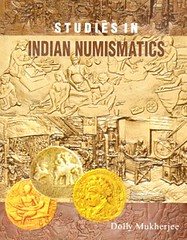 The monograph contains the result of the sustained researches in the field of Indian numismatics through the ages. Coins as tiny sources of history reflect the socio-economic conditions in the life of the people. As cultural mirror of the nation they depict images of divinities religious edifices, portraits of rulers as also the animals and birds of a country.
The monograph contains the result of the sustained researches in the field of Indian numismatics through the ages. Coins as tiny sources of history reflect the socio-economic conditions in the life of the people. As cultural mirror of the nation they depict images of divinities religious edifices, portraits of rulers as also the animals and birds of a country.
In eighteen well written research papers the author has ventured to bring out the salient features of Indian numismatic history including the early phases of Indian coins as documented by the bent bar and punch marked specimens the visual account of the Hindu and Greco Roman Gods, such as Vishnu and different varities of Lakshmi, including the Gajalakshmi as also Ardoksho the popular art motifs like Salabhanjika, the temple tokens depicting Rama's coronation scene and others, the rare gold issues by the Muslim Sultans, the metrological study of a group of coins, an elaborate history of Indian coins through the ages, modern issues of the Republic of India and importantly enough the study of the growth and development of the fabulous coin collection in the Indian Museum.
Authors (s): Dolly Mukherjee (Author)
Format: Hardcover
ISBN-13: 9789381707265
Pages: xiv+144p., 40 B/W Plates
Pub. date: 31.12.2012, 1st. ed.
Publisher: Pritonia Publishers & Distributors
Language (s): English
Bagchee ID: BB78417
List price: US $ 67,00
To read the complete article, see: Studies in Indian Numismatics (www.bagchee.com/books/BB78417/studies-in-indian-numismatics)
REVIEWER SOUGHT FOR DRAPED BUST HALF DOLLARS 1796-1797 BOOK
David Yoon is the editor of our print journal, The Asylum. he writes:
 Heritage sent me a review copy for The Asylum of Jon Amato's The Draped Bust Half Dollars of 1796-1797. I will send this copy on to the first volunteer who is willing to commit to writing a new (i.e., not published anywhere else previously) 300- to 1000-word review of the book.
Heritage sent me a review copy for The Asylum of Jon Amato's The Draped Bust Half Dollars of 1796-1797. I will send this copy on to the first volunteer who is willing to commit to writing a new (i.e., not published anywhere else previously) 300- to 1000-word review of the book.
To read an earlier E-Sylum article, see: NEW BOOK: THE DRAPED BUST HALF DOLLARS OF 1796-1797 (www.coinbooks.org/esylum_v16n02a03.html)
THE BOOK BAZARRE
BOOK REVIEW: PICTURES FROM A DISTANT COUNTRY
 I'd like to say a few words about Richard Doty's beautiful new book, Pictures From a Distant Country: Seeing America Through Old Paper Money. As senior curator of the Smithsonian Institution’s National Numismatic Collection, Dick has a wonderful collection of obsolete U.S. paper money at his disposal. The marvelous images throughout this book illustrate American history close-up, taking us back to the America of the 1800s - the "distant country" of the book's title.
I'd like to say a few words about Richard Doty's beautiful new book, Pictures From a Distant Country: Seeing America Through Old Paper Money. As senior curator of the Smithsonian Institution’s National Numismatic Collection, Dick has a wonderful collection of obsolete U.S. paper money at his disposal. The marvelous images throughout this book illustrate American history close-up, taking us back to the America of the 1800s - the "distant country" of the book's title.
From the author's Introduction:
Jacob Perkins revolutionized the creation of money. The processes that he developed worked so perfectly that they remained the basis of security printing for more than a century and a half.
At the heart of Perkins’s processes was the belief that all currency should be and would be identical. Only in that way, he reasoned, would the public have an absolute assurance about which note was good and which bad. The designs he devised were therefore lacking in artistry, but infernally difficult to counterfeit. He set up a security-printing establishment in Newburyport, Massachusetts, and a grateful legislature gave him a monopoly on all note-printing there and in Maine (which formed part of Massachusetts until 1820). Soon Perkins’s homely-but-distinctive products were appearing across New England and well beyond. But the inventor had unleashed far more than he had anticipated.
He had assumed that all bankers would flock to his processes and designs. He was right on the first count but wrong on the second. His techniques had become common knowledge within a decade or so of their invention, and everyone agreed that they were the final word in security printing. But agreement ended there: what the bankers wanted (and what a succeeding generation of printers found it expedient to give them) was variety: far from the universality which Perkins foresaw, the bankers envisioned a broad choice of pictorial design, a host of renditions whose artistry and excellence would distinguish their notes from those of their competitors. Perkins’s successors, beginning with Murray, Draper, Fairman & Company and ending with the American Bank Note Company, would find that they could give their customers what they wanted, using transfer technology. By the mid-1830s, the process was in full swing: the American private bank note was approaching its maturity, and those who created it and those who commissioned it were finding an important new use for their product, beyond the mere buying and selling of goods.
They were finding it useful for telling the country about itself, about where it had been, where it was going, and who was along for the ride. What they found (and what we can learn from them) will form the remainder of this book.
I guess I'd never fully understood why Perkins' plan for currency never took off. The designs were secure, but they were bland. Who wants bland when you can have some color and variety? Together with the explosion of banks and banknotes due to the laws and economy of the day, obsolete banknotes proliferated in an abundance of issuers, styles, designs, and denominations. This beautifully illustrated coffee-table style book is a wonderful introduction and overview of the series, but it's far from lightweight - as shown with the Perkins discussion, even a more seasoned numismatist like me can learn something from Doty's insights. Despite the pretty pictures, this is no numismatic Playboy issue - you'll want to devour the text as well.
Doty covers many aspects of the imagery often seen in the notes. Here's a passage about the relationship of Liberty and founding father George Washington.
 It was inevitable that Liberty would also be found in close conjunction with real figures from our past, depicted in a symbiotic relationship. She supported them, gave strength to their efforts on behalf of the people. And they supported her, spreading her blessings to all.
It was inevitable that Liberty would also be found in close conjunction with real figures from our past, depicted in a symbiotic relationship. She supported them, gave strength to their efforts on behalf of the people. And they supported her, spreading her blessings to all.
Among these worthies, no one was more important than George Washington, victorious general, first president, father of the nation. Washington often appeared with Liberty (and with other allegorical figures, as we shall shortly see). But one of the most striking depictions appeared fairly early, and it came from the frontier Northwest. In 1838, a Michigan banker in the hamlet of Saline asked his printer in New York to pull out all the stops. The result was a skillful, if crowded, image of the hero, flanked and sustained by Liberty (whose pole and pileus actually bisect the portrait). Flags and the national shield complete the arrangement
While most of the illustrations are close-ups of the notes, for reference ALL of the notes illustrated are all shown full size in an appendix which comprises about half of thebook. Here's a note from Winchester, VA:

Getting back to Doty's insights and commentary, here's another great example, dealing with how certain images were retouched and reused on different notes.
In our second case, the retouching was even less radical. In 1852, the Farmers Bank of Onondaga came into existence, enjoyed a brief and troubled career, and failed the following year. But it ordered currency in several denominations from a New York firm called Wellstood, Hanks, Hay & Whiting, and it placed some of it in circulation prior to its demise.
For its $1 bill, printer and banker agreed upon a vignette of a young white farmhand carrying a basket of corn. A few years later, another banker wanted new paper money. This banker was Southern, and he wanted a slave scene. Wellstood, Hanks, Hay & Whiting (who by now formed part of a new firm, the American Bank Note Company), could easily oblige. They took their white farmhand, blackened his skin, tattered his clothing, and added a patch to his shirt—and he now did duty as a slave in Virginia.
This is all quite amusing to us, but it was serious business to the people of the time. For if the country had become so divided that its security printers were required to supply two sets of images, one for each section, matters were passing beyond mortal control.
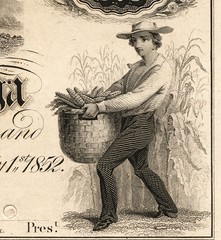
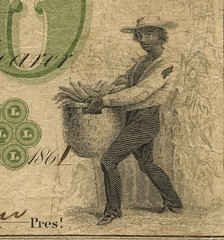
The book fails my back-of-the-book test - there is no bibliography or index, although there is a listing of the pictured notes by state and town. As a bibliophile though, I do appreciate the wonderful full-color dust jacket. I'll probably protect this one with a Brodart cover if I have one in that size.
When I finish reading it I'll prepare a place of honor for it on my shelf of literature on U.S. obsolete paper money. It's a great companion to the Roger Durand series of "Notes on..." portraits, vignettes, denominations and allegorical representations on obsolete notes. (Which points out why a great book ought to have a bibliography or at least a "Further Reading" section - to point the readers to related books for further investigation).
I'd recommend the book to any numismatist, whether you collect obsolete paper money or not. And to any student of U.S. history. For more information and ordering information, see the earlier E-Sylum article.
Publisher Dennis Tucker adds:
The Wall Street Journal featured the book in its April 13, 2013, edition. It’s good to see this hugely important area of American financial history --- 70 years of paper currency issued by thousands of banks and other entities --- getting national recognition in the mainstream media.
To read the earlier E-Sylum article, see: NEW BOOK: PICTURES FROM A DISTANT COUNTRY (www.coinbooks.org/esylum_v16n12a03.html)
BOOK REVIEW: FROM MINE TO MINT
 Roger Burdette's latest book, From Mine to Mint fills a yawning gap in our knowledge of minting technology in the United States.
The first thing for readers and numismatic scholars to take note of is right on the title page - the subtitle noting that the book covers "American Coinage Operations and Technology 1833 to 1937". So don't expect to find new revelations about minting of America's earliest coins at the first Philadelphia Mint.
Roger Burdette's latest book, From Mine to Mint fills a yawning gap in our knowledge of minting technology in the United States.
The first thing for readers and numismatic scholars to take note of is right on the title page - the subtitle noting that the book covers "American Coinage Operations and Technology 1833 to 1937". So don't expect to find new revelations about minting of America's earliest coins at the first Philadelphia Mint.
As Roger notes in his Introduction, the early decades of the Mint have already been thoroughly explored by other researchers, many of whom were consulted and are contributors to this work. E-Sylum readers will recognize the names of R. W. Julian, Len Augsburger, David Lange, and David Ginsburg, all of whom have authored authoritative books and articles on the subject.
The book picks up the story of American minting technology with the era of expansion, as the country moved beyond its one rickety old Philadelphia Mint to a new era with newly constructed and appointed mint facilites in Philadelphia and later across the nation, with as many as five mints operating simultaneously.
The Introduction is notable for numismatic researchers, providing both a short survey of the available literature on the U.S. Mints and more importantly, a knowledgeable critique of its quality and usefulness. Below is an excerpt:
A Paradox of Sources
Our English word “source” perpetuates the French idea of a spring of water flowing from some defined origin. This flow of evidence commences with the writings of those who proposed a United States Mint, and continues through documents from the hands of some of its first managers and officers. A small assembly of journals and workbooks add to the picture of the early mint and its operations. Yet following the early generation of memorialists, our sources run thin. A few popular descriptions give life to the mints and assay offices, but the experience is dulled by lack of depth and revelation.
Our “sources” become merely adulterated copies – engravings and all – of their progenitors much like the “copycat” work of modern internet hacks. We have no complete early narrative of how the mints worked. We have no surviving and satisfying history by the operatives of one of the major institutions of this American nation. It is as if the Mint Bureau established a fog shrouded fortress and set to work with wizards at the foot of some great creaking drawbridge. The paradox is that this institution manipulating much of the national treasure, that place of clerks and scribes recording each minute detail, left almost nothing of itself.
Although we know that most mint documents are missing and presumed lost, surviving evidence is ample in quantity but poor in quality. Journals of deposits tell us little about the depositors or what the mint workers did once the miner gave up his gold. Not one ordinary worker seems to have recorded his or her impressions, daily routine or thoughts on working at the mint. The piles of journals are outputs of human machines with no more clear recognition than abacus, adding machine or electronic calculator.
The book does much to sort through the fog of history to illuminate the changes and innovations in technology accomplished by the engineers and mechanics of the Mint:
As a new country, European nations viewed America as a rude cousin not ready for international leadership. The Royal Mint and its continental counterparts seldom visited American mints, and when they did so their conclusions were likely commonly: “We’ve been doing that for many years. There’s nothing to learn from them.” There was much truth to such sentiments, but there was also much the continentals overlooked.
The United States Mint was a mere infant compared to the Royal Mint with its lengthy archive of processes, data and materials. The Philadelphia Mint was also a late adopter of steam engines as the power source for metal forming and minting equipment. But what American engineers did was to use their late start as a means for separating out technology that was unstable, overly complex or proprietary.
In mid-1835 we find Philadelphia engineer/machinist Benjamin Franklin Peale discarding most of the complexity and tradition attendant to press design work of Thonnelier in Paris, Uhlhorn in Karlsruhe, and Boulton in London. Peale went to basic principles of equipment used at these great mints, and adapted it to the American model of efficiency. Equipment had to be robust and easy to repair. The vast distances of North America made it impossible to have mechanical experts at each mint, sitting, waiting for something to break.
The book's first three chapters focus on the basics of refining and minting. Chapter One opens with a discussion of bullion and the various forms in which it arrived at the Mint's doorstep, including gold dust, gold amalgram, laminated gold, gold cakes, "Plata Pina Silver Amalgram" and silver plate. Included is a discussion of the weight and fineness of private gold coins such as those of Templeton Reid and the Bechtlers. These were accepted for recoining along with any non-U.S. gold coins, based on their gold content.
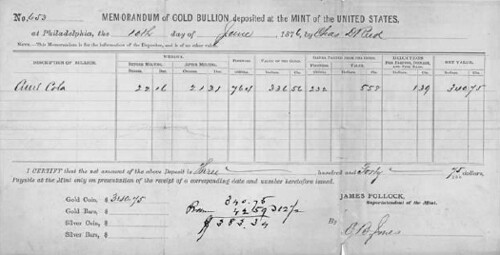 Philadelphia Mint Bullion Deposit form
Philadelphia Mint Bullion Deposit form
The next part focuses on minting operations in more detail, noting the differences in techniques and results in different time periods and at different mints. One thing I learned here was that until the late 1930s only one denomination at a time would be worked in each step of production - that was the primary method of quality control and avoided the problem of mixed planchets. The various steps include rolling ingots, cutting or blanking to create planchets, adjusting their weight, upsetting or "milling" the edge, and finally striking the coins.
Chapter Three covers the various Mints and Assay Offices of the U.S. from 1833 to 1937. The first mints beyond Philadelphia were located in the gold regions of Charlotte, NC and Dahlonega , GA. Next came a southern mint for both gold and silver in New Orleans, LA.
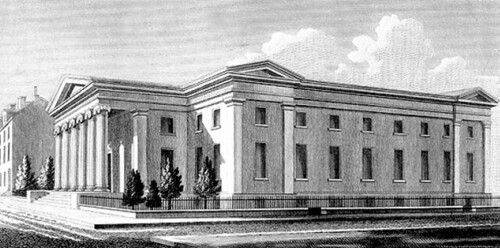
Architect's Drawing of the Second Philadelphia Mint
This chapter includes architectural diagrams and floor plans for the mint beginning with the second Philadelphia Mint, which opened in 1833.
Visitors were met by a corps of polite, efficient and good natured guides who directed depositors to the correct location for depositing gold, and organized visitors into small tour groups. The six guides (known as "conductors") earned $3.50 per day, wore uniforms and presented themselves as part of the security force, but it was unclear if they would actually be of help in an emergency.

A Portion of the Mint's Coin Collection in 1888
I enjoyed the picture of the Mint's doorkeeper seated next to a Gatling gun. Robbers, beware! Even more of a delight was the section on the Engraving Department and Cabinet of Coins.
Next is covered the Third Philadelphia Mint building, opened in 1892. As with all of the Mints discussed in the book, each of the minting processes departments is described. This section has a good bit of information about the Mint coin collection, which was quite a popular tourist attraction.
The chapter continues with similar treatments of the New Orleans, Charlotte, Dahlonega, the first and second San Francisco Mints, the Carson City Mint, and the Denver Mint. Also covered are the various Assay Offices, beginning with New York. Coincidentally, the book includes a brief discussion of the Wall Street bombing of 1920, which we mentioned in last week's E-Sylum. The bomb had been concealed in a horse drawn wagon.
Stones in the assay office façade had to be replaced, as well as metal window sash, grill work, interior marble and plaster in the lobby, and window glass throughout the front side. The new building had been accepted by the government in August but opening was delayed to repair damage from the bombing.
Chapter Four covers the Officers of the Mint Bureau and their functions, from cashier to coiner to engraver and Director. Chapter Five is titled "Working at the Mint" and is particularly interesting given the factors of politics, gender and class. Many laborers performed backbreaking work for endless hours while others got paid for doing next to nothing. Chapter Six, "Operating Policies and Procedures" rounds out Part One of the book.
Part Two dives into "Detailed Department Operations" in Chapter Seven, describing how each department worked, Mint by Mint. Here readers can compare and contrast the operations at the mother mint and the various branches. As with part One, there are a number of great pictures throughout.
Medal collectors will enjoy the section on the Medal Department, beginning on p322. Another section covers the manufacture of proof coins. The section on the Engraving Department focuses on the technology and processes.
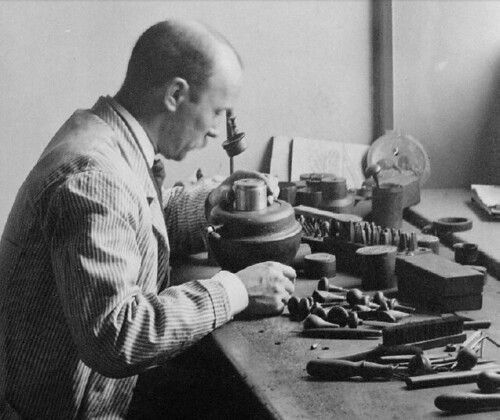 Engraver Charles E. Barber working on a medal die in 1888
Engraver Charles E. Barber working on a medal die in 1888
The book passes my back-of-the-book test with a fourteen-page bibliography. There are also great footnotes throughout. There is no index, but as the author notes, one is not completely necessary, especially given that the electronic version is completely searchable.
"From Mine to Mint" is jam-packed with great information on the U.S. Mints and their operation. There is much to be learned here about how the coins we collect were made, and how errors occurred. Other interesting topics include security and unresolved thefts over the years. Simply put, it's an amazing book and a must-have for any library of U.S. numismatics.
To read the earlier E-Sylum article, see: NEW BOOK: FROM MINE TO MINT (www.coinbooks.org/esylum_v16n12a04.html)
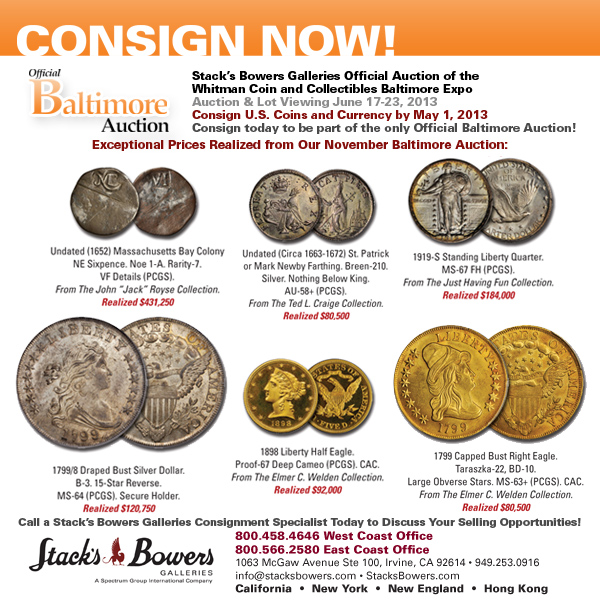
BOMB BLAST NUMISMATIC SOUVENIRS
Pete Smith responded with this image of an item related to the 1886 Chicago Haymarket bombing:
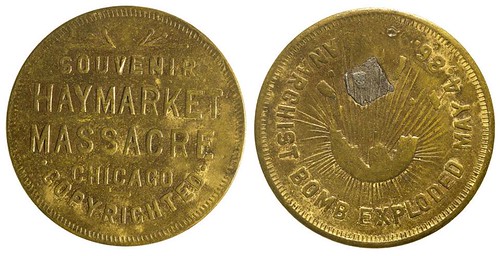
Pete adds:
This was Lot 3138 of the Holabird - Kagin sale of June 30, 2011. It had a reserve of $100 and did not sell.
Rich Hartzog adds:
This also comes holed as made, and I have one.
Gar Travis forwarded this article about a future bombing-related medal. Thanks! -Editor
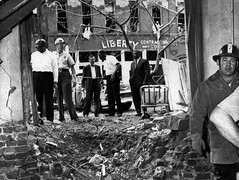 Four Alabama girls killed in a 1963 terrorist bombing at their church would posthumously receive the Congressional Gold Medal under legislation House lawmakers approved unanimously Wednesday.
Four Alabama girls killed in a 1963 terrorist bombing at their church would posthumously receive the Congressional Gold Medal under legislation House lawmakers approved unanimously Wednesday.
The medal is the highest civilian honor Congress can bestow.
The Senate also is expected to approve the legislation honoring the four girls, whose deaths became a defining moment of the civil rights movement. Once the proposal becomes law, a medal ceremony is planned for later this year in the U.S. Capitol, according to House Minority Leader Nancy Pelosi of California.
Addie Mae Collins, 14; Denise McNair, 11; Carole Robertson, 14; and Cynthia Wesley, 14, were killed by Ku Klux Klansmen who planted a bomb at the 16th Street Baptist Church, a prominent black church in downtown Birmingham, Ala.
The murders shocked the country and prompted Congress to enact civil rights legislation. Three of the bombers were eventually convicted. Sisters of two of the bombing victims watched from the House gallery Wednesday as lawmakers discussed the medal legislation. Afterward, the sisters posed for pictures on the steps of the Capitol and had lunch with Rep. Terri Sewell, D-Ala., the lead sponsor of the legislation.
Sewell said the official medal ceremony probably will take place in early September before the anniversary of the bombing on Sept. 15.
Bachus and Sewell said it has taken 50 years to fully appreciate what the girls' murders meant to the history of the country and the world, and the value of non-violent protest to affect social change.
"It has stood the test of time," Bachus said.
To read the complete article, see: House approves medal for victims of 1963 church bombing (www.usatoday.com/story/news/nation/2013/04/24/house-approves-gold-medal-for-1963-bombing-victims/2110855/)
To read the earlier E-Sylum article, see: WAYNE’S NUMISMATIC DIARY: APRIL 21, 2013 (www.coinbooks.org/esylum_v16n16a20.html)
NOTES FROM E-SYLUM READERS: APRIL 28, 2013
Tom DeLorey Comments on Columns
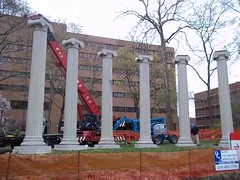 Punny guy Tom DeLorey writes:
Punny guy Tom DeLorey writes:
Great issue! Literally six columns for the price of one!
To read the earlier E-Sylum article, see: SECOND PHILADELPHIA MINT COLUMNS STANDING TALL ONCE AGAIN (www.coinbooks.org/esylum_v16n16a11.html)
Chapman's 1907 Wilson Sale Title Page Image Sought
 Harry Cabluck of Austin, TX writes:
Harry Cabluck of Austin, TX writes:
I am seeking an image of the title page of Chapman's 1907 (Wilson) auction catalog. I'd like to attach a reduced image to the back side of framed plates from that sale.
Are Proof Dollars Made With Segmented Collars?
Joe Boling writes:
 Regarding the article about proof coining at the San Francisco Mint, are presidential and Native American proof dollars being made with segmented collars bearing the edge lettering? I know the circulation strikes are still getting edge lettering in a separate operation, but this article says the edge lettering at SF is applied at the time of primary striking.
Regarding the article about proof coining at the San Francisco Mint, are presidential and Native American proof dollars being made with segmented collars bearing the edge lettering? I know the circulation strikes are still getting edge lettering in a separate operation, but this article says the edge lettering at SF is applied at the time of primary striking.
To read the earlier E-Sylum article, see: ARTICLE FEATURES PHOTOS OF SAN FRANCISCO MINT OPERATIONS (www.coinbooks.org/esylum_v16n16a22.html)
THE BOOK BAZARRE
Distinguished Warriors Not All Far From Battlefield
Joe Boling writes:
 About the Distinguished Warfare medal - I agree with the decision to cancel its introduction, but the statements widely published about all of its potential wearers operating "far from the physical battlefield" are not necessarily correct. Some (perhaps many) of these remote operators do so from within the theater of operations. While not out humping the boonies, they are subject to the same risks as anyone else working "in country."
About the Distinguished Warfare medal - I agree with the decision to cancel its introduction, but the statements widely published about all of its potential wearers operating "far from the physical battlefield" are not necessarily correct. Some (perhaps many) of these remote operators do so from within the theater of operations. While not out humping the boonies, they are subject to the same risks as anyone else working "in country."
To read the earlier E-Sylum article, see: DISTINGUISHED WARFARE MEDAL STOPPED (www.coinbooks.org/esylum_v16n16a27.html)
On Gradual Change
Last week I described “the Revolution of the Moderates”:
(Leader) What do we want?!
(Crowd) GRADUAL CHANGE!
(Leader) When do we want it?!
(Crowd) IN DUE COURSE!
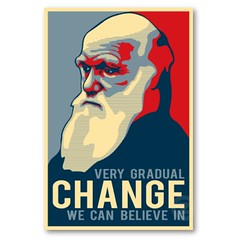 Bill Eckberg forwarded this image. To which I replied, "Down with Darwinism! Up with Creationsim!" My next message was "Down with Creationism! Up with Darwinism!"
Bill responded:
Bill Eckberg forwarded this image. To which I replied, "Down with Darwinism! Up with Creationsim!" My next message was "Down with Creationism! Up with Darwinism!"
Bill responded:
You sound confused. I recommend many years of intensive and expensive psychotherapy.
To read the earlier E-Sylum article, see: NOTES FROM E-SYLUM READERS: APRIL 21, 2013 (www.coinbooks.org/esylum_v16n16a10.html)
Medieval Coins Video
Georges Depeyrot forwarded this link to a new English-language video on the medieval coins. Thanks!
To view the video, see Medieval coins (English version) (vidéo 42 mn) (www.academia.edu/3354310/Medieval_coins_English_version_video_42_mn_)
This is a great series of professionally-produced videos. See them all at: cnrs.academia.edu/GeorgesDepeyrot/Videos
Fake Note Fan Mail
Pat McBride writes:
I loved the article about the Indian hookers getting ripped off with the fake notes. Well done !!!
To read the earlier E-Sylum article, see: PROSTITUTES ADVISED NOT TO ACCEPT MONEY IN THE DARK (www.coinbooks.org/esylum_v16n16a31.html)
MORE ON THE PANAMA-PACIFIC HALF DOLLARS WITHOUT MINTMARKS
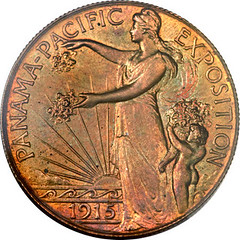 The initial sets of working dies for all denominations were intentionally prepared with no mintmark, and the dollar dies had arrived at the San Francisco Mint when the omission was discovered. Philadelphia Mint Superintendent Adam Joyce had ordered the engraving department not to include the “S” mintmark because the law required all of the coins to be struck at San Francisco. Thus, he felt an “S” mintmark was superfluous. Mint Director Robert Woolley realized that the mintmark was a source of local pride in San Francisco and had all dies recalled and the “S” added.
The initial sets of working dies for all denominations were intentionally prepared with no mintmark, and the dollar dies had arrived at the San Francisco Mint when the omission was discovered. Philadelphia Mint Superintendent Adam Joyce had ordered the engraving department not to include the “S” mintmark because the law required all of the coins to be struck at San Francisco. Thus, he felt an “S” mintmark was superfluous. Mint Director Robert Woolley realized that the mintmark was a source of local pride in San Francisco and had all dies recalled and the “S” added.
Pieces in copper/bronze and correct metals were likely made as engineering test pieces for design approval. Pieces struck in incorrect metals, such as half dollars in gold, would not have been authorized and reasons for their manufacture are speculative. [See Renaissance of American Coinage 1909-1915, pp.290-293 for more information.]
To read the earlier E-Sylum article, see: ERIC NEWMAN'S 1915 NO S PANAMA-PACIFIC HALF DOLLARS (www.coinbooks.org/esylum_v16n16a15.html)
EBAY BANS LISTINGS OF CUBAN COINS AND BANKNOTES
Frank Putrow writes:
eBay instituted a new policy on April 9th that denied all listings of Cuban coins and currency. A few listings slipped through, but basically, they shut off the listings completely. I found it impossible to contact eBay executives by telephone, thus the attached letter that I sent.
 My name is Francis X. Putrow. I am the president of the Cuban Numismatic Association (CNA), founded in 2004. I have been contacted by many of our fellow CNA members that recent attempts to list Cuban numismatic items had been rejected by eBay. These members contacted eBay Customer Service representatives, who referenced the new policy, but were unable to address the CNA members’ complaints that the CUBAN EMBARGO excludes “Cuban coins and paper money that were minted/printed before February 7, 1962. In the meantime, no listings are being allowed by eBay.
My name is Francis X. Putrow. I am the president of the Cuban Numismatic Association (CNA), founded in 2004. I have been contacted by many of our fellow CNA members that recent attempts to list Cuban numismatic items had been rejected by eBay. These members contacted eBay Customer Service representatives, who referenced the new policy, but were unable to address the CNA members’ complaints that the CUBAN EMBARGO excludes “Cuban coins and paper money that were minted/printed before February 7, 1962. In the meantime, no listings are being allowed by eBay.
I have reviewed eBay’s GUIDE to COLLECTING CUBAN COINS, which clarifies that “coins minted before the embargo was in place can be legally sold and purchased in the United States." The guide includes a sample list of specific coins that fall into this category. These coins, as well as ALL the Cuban coins up to 1961, were minted in the Philadelphia, PA mint. Actually, the sample list referenced is a very small number of the population that was minted by the Philadelphia mint. eBay’s new listing policy of Cuban coins is very inconsistent with the above published guide.
Cuban currency was also printed by the Bureau of Engraving and Printing (BPE) in Washington, DC until 1949, and then printed by the American Note Company until 1960. 20th Century Cuban notes were also printed by the American Note Company for the Spanish Bank in Cuba. All of these items are currently denied listing as well.
The current listing policy of Cuban currency is inconsistent with eBay’s guide above.
2013 NUMISMATICS INTERNATIONAL WORLD COINS SEMINAR

I am a long time member of Numismatics International (NI) and moderate their meetings at the summer ANA Conventions.
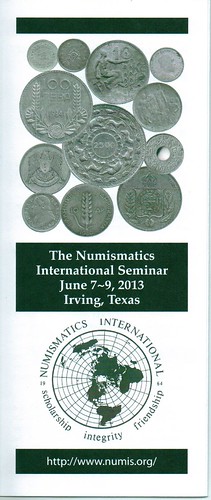 One of their active members has come up with the idea to have an NI Seminar which concentrates only on world coins. It will be conducted June 7 to 9, 2013 in Irving, Texas.
One of their active members has come up with the idea to have an NI Seminar which concentrates only on world coins. It will be conducted June 7 to 9, 2013 in Irving, Texas.
The seminar will be broken down into several parts. The three mornings of the seminar will be about identifying coins from different parts of the world. The first afternoon will be about the grading of world coins. The second afternoon will be about learning how to identify counterfeits. The last afternoon will be a model auction to learn how to submit lots and how to bid on auction lots.
The seminar will be held at the Courtyard Dallas DFW Airport North at 4949 Regent Boulevard. Irving, TX 75063. You need to telephone the hotel at 972-929-4004 to make your reservations. When you mention the NI Seminar, the rate will be only $65 a night plus tax. The hotel also has a shuttle to and from DFW.
The early registration for NI members is $150 and non-Ni Member is $250. Late registration is $200 for NI members and $300 for non-NI members. You can go to the NI website at www.numis.org and pay via PayPal or send them a check at P.O. Box 570842, Dallas, TX 75357.
THE BOOK BAZARRE
MORE ON THE RADIANT AMERICAN EAGLE GAMING COUNTER
 I just saw the numeral 20 game counter on the site. I happen to know exactly what it is. It is a radiant eagle game counter...... It was issued in several ways. All of these are rare.
I just saw the numeral 20 game counter on the site. I happen to know exactly what it is. It is a radiant eagle game counter...... It was issued in several ways. All of these are rare.
Rad-14 as listed by TAMS is guilt brass. plain edge. 40mm. issued with a watch stem.
Rad-15 is smaller without an ornamental rim and 34mm.
Rad-15a both obv. and rev. is struck with the numeral 20 where rad-14 and 15 have the eagle on the obv.
These counters were issued to a casino. The variations were patterns and some were trial pieces. These are not common and are quite valuable. The watch stems were a gimmick to entice men to buy a piece and never use it, thus a profit to the establishment. All were destroyed when the casino changed counters, but a few survived.
 In 1973 this piece was listed as worth $27.00. it has grown a bit in value since.
It is good to see these counters re-born.
The piece shown on your site is worth every bit of $175.00 today. I have the best collection of these known.
In 1973 this piece was listed as worth $27.00. it has grown a bit in value since.
It is good to see these counters re-born.
The piece shown on your site is worth every bit of $175.00 today. I have the best collection of these known.
This particular counter was issued with or without an ornamental border. They are quite rare with the watch loop, as it was called in the day. The December 1972 TAMS Journal issue shines some more light on this token.
It is important to know that all the variations of the different numerals were intended and were used in a casino or saloon. they could not be redeemed anywhere else except the establishment where issued.
In the game counter world, many different variations exist. The same category for example may would have different size counters of the same kind. either they were a sample to the establishment, maybe a salesman's sample (which I doubt), or the different sizes were issued to different gambling establishments.
I have found within my collection that different reverses often share the same obverse. From the 1880's to the present day all casinos use different style counters, their size, color, and weight were then as now big factors in what each establishment wanted. This would answer why there are different variations.
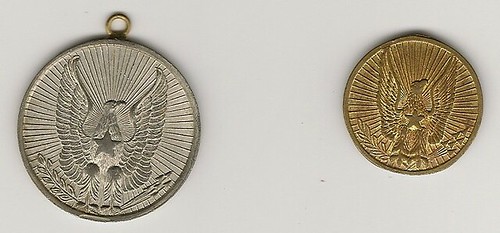
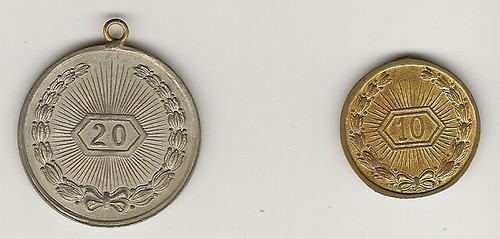
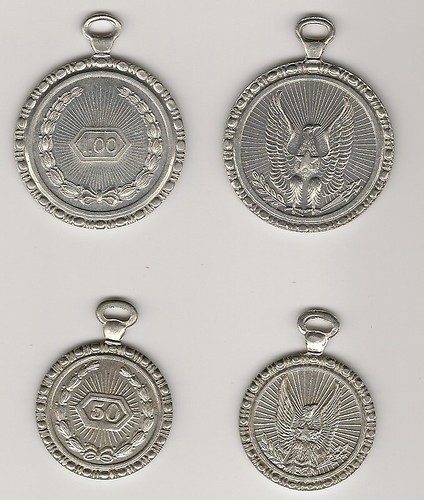
To read the earlier E-Sylum article, see: UNKNOWN COPPER COIN IDENTIFIED AS AMERICAN GAMING COUNTER (www.coinbooks.org/esylum_v13n20a16.html)
To read the earlier E-Sylum article, see: WATCH FOBS AS NUMISMATIC ITEMS (www.coinbooks.org/esylum_v16n15a15.html)
THE BOOK BAZARRE
SELECTED LOTS FROM SKLOW MAIL BID SALE NO. 19
Paine's Early Paper Currency of Massachusetts
251. Paine, Nathaniel. REMARKS ON THE EARLY PAPER CURRENCY OF MASSACHUSETTS: READ BEFORE THE AMERICAN ANTIQUARIAN SOCIETY, APRIL 25, 1866. Cambridge: Press of John Wilson and Sons, 1866. 66pp. 1 engraved plate, 3 engraved text illustrations, 4 mounted photographic plates of early paper currency. Large 8vo. 27.5 x 18cm. Original tan/cream paper covers. Fifty copies on large paper. No.16. Four mounted photographic plates, [1]-Massachusetts Bill of 1690, facing page 16; [2]-Massachusetts Bill issued under Act of 1713, facing page 22; [3]- Specimen of the small bills issued by Massachusetts in 1737, facing page 32; [4]- Specimen of a Manufactory Bank Bill of 1741, facing page 40;
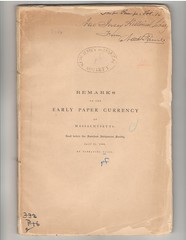 One of only seven accounted for examples, No.12 sold by Bowers & Merena in the Armand Champa Library sale part one lot 441 with 4 plates; No.16 offered here; No. 28 in the ANS Library and bears no plates; No. 32 sold by Kolbe in John J. Ford, Jr. Library sale part one lot 737 and had only 3 plates; No. 37 in the Boston Athenaeum and lacks one plate; No. 39 in the Library of Congress with only 3 plates; No. 41 sold by Kolbe in the John W. Adams Library sale 44 lot 353 with only 3 plates; the example offered here is inscribed on the front cover in fountain ink and thought to be in Paine’s hand- New Jersey Historical Society from Nathaniel Paine;
One of only seven accounted for examples, No.12 sold by Bowers & Merena in the Armand Champa Library sale part one lot 441 with 4 plates; No.16 offered here; No. 28 in the ANS Library and bears no plates; No. 32 sold by Kolbe in John J. Ford, Jr. Library sale part one lot 737 and had only 3 plates; No. 37 in the Boston Athenaeum and lacks one plate; No. 39 in the Library of Congress with only 3 plates; No. 41 sold by Kolbe in the John W. Adams Library sale 44 lot 353 with only 3 plates; the example offered here is inscribed on the front cover in fountain ink and thought to be in Paine’s hand- New Jersey Historical Society from Nathaniel Paine;
Ex: New Jersey Historical Society with their oval stamp at top front cover and title page; few library marks on cover; covers chipped, as are the first few blank pages; spine worn off; internally sound and clean; of extreme rarity and importance; not present in the Bass or Fuld libraries; one of only two extant with all four photographic plates; Davis 820: Newman page 196: Sigler 1974: Very Good. (1500.00)
Henry Hines and His 1799 Large Cent
381. Hines, Henry C. ORIGINAL PHOTOGRAPH 1940. OF HENRY C. HINES HOLDING FAMOUS 1799 LARGE CENT. [New York]. November 3, 1940. Black and white 11.5 x 7cm original photograph. Photograph of Henry C. Hines holding the famous 1799 Large cent he paid $2500 for; he is dressed in suit, tie with vest and hat and has a huge WILLKIE button pinned on his suit jacket;

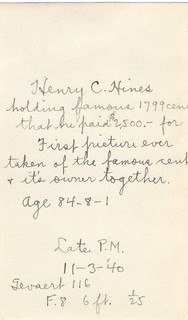
the reverse of the photograph has inscribed in fountain ink – “Henry C. Hines holding famous 1799 cent that he paid $2500- for; First picture ever taken of the famous cent & its owner together. Age 84-8-1, Late P.M. 11-3-’40, gevaert 116, F.8 6ft. 1/25” the last information is obviously the camera settings used to shoot the picture;
the envelope the photo is tipped in is from The Chase National Bank, Museum of Moneys of the World, 13 Broad Street, New York 15, N.Y.; the building Hines is standing in front of, could very well be the Chase National Bank; in Pete Smith’s work, American Numismatic Biographies, 1992, he mentions the 1799 cent purchase; Hines was born in 1856 and died in 1946; a rare and interesting photographic; Fine. (100.00)
The Australian Numisma
1004. Gartner, John. NUMISMA: AN OCCASIONAL NUMISMATIC MAGAZINE. Melbourne, Australia. 1961-1968. Issues 1-8, 10-12. 12mo. 16pp. each. Self covered as issued. March 1961-November 1968; a most interesting periodical; front of No. 1 March 1961 states-“some twenty years ago Sidney K. Eastwood of Pittsburgh, U.S.A., prepared a paper on the ‘Coins and Tokens of Jersey,’ bring Atkins’ list down to 1937. Having a small hand-press he set the article, together with one by W. W. Woodside on the ‘Commemorative Coins of the British Empire’ and issued it under the title of Numisma. Thus was the title revived which Ed Frossard used for a similar publication from 1877 to 1884.
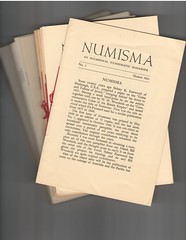 The first issue of Numisma was printed in May 1939 in an edition of 75 copies, and the last issue, No. 7, appeared in October 1948. It was sub-titled an occasional numismatic pamphlet, the seven issues spread over a period of ten years testifying to its correctness.
The first issue of Numisma was printed in May 1939 in an edition of 75 copies, and the last issue, No. 7, appeared in October 1948. It was sub-titled an occasional numismatic pamphlet, the seven issues spread over a period of ten years testifying to its correctness.
The original contributors remained the only contributors through the years. Recently I was most fortunate in obtaining a complete set of this rare pamphlet from my friend, Bill Woodside, and the thought arose to carry it on from the other side of the world. Sidney Eastwood has given the project his blessing, and he and Bill Woodside are again original contributors.”
This interesting publication is not limited to Australia or the Pacific, but contains articles concerning every area of numismatics; in the first issue an article on the Franklin Press Token and U. S. Political pieces appear; the first four issues are secured with crimson cord as issued, the remaining issues are stapled as issued; a great and scarce periodical; eleven of the first twelve issues spanning eight years; Fine. (50.00)
To read the earlier E-Sylum article, see: SKLOW MAIL BID SALE NO. 19 CATALOG AVAILABLE (www.coinbooks.org/esylum_v16n16a04.html)
NEW $100 NOTE TO ENTER CIRCULATION OCTOBER 8, 2013
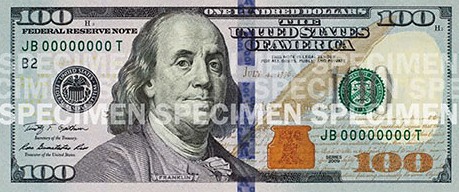
The Federal Reserve Board on Wednesday announced that the redesigned $100 note will begin circulating on October 8, 2013. This note, which incorporates new security features such as a blue, 3-D security ribbon, will be easier for the public to authenticate but more difficult for counterfeiters to replicate.
The new design for the $100 note was unveiled in 2010, but its introduction was postponed following an unexpected production delay. To ensure a smooth transition to the redesigned note when it begins circulating in October, the U.S. Currency Education Program is reaching out to businesses and consumers around the world to raise awareness about the new design and inform them about how to use its security features. More information about the new design $100 note, as well as training and educational materials, can be found at www.newmoney.gov
NOTE: The web address newmoney.gov has since changed to uscurrency.gov . -Editor
BANK OF ENGLAND ANNOUNCES CHURCHILL BANKNOTE
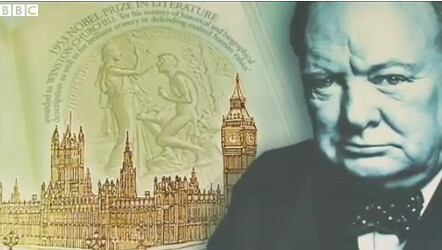
Sir Winston Churchill will feature on the new design of a banknote which will enter circulation in 2016, the Bank of England has announced.
The wartime leader's image is planned to feature on the reverse of the new £5 note, together with one of his most celebrated quotations.
Churchill was chosen owing to his place as "a hero of the entire free world", said Bank governor Sir Mervyn King.
"Our banknotes acknowledge the life and work of great Britons. Sir Winston Churchill was a truly great British leader, orator and writer," Sir Mervyn said.
"Above that, he remains a hero of the entire free world. His energy, courage, eloquence, wit and public service are an inspiration to us all."
Current plans, which the Bank said might be reviewed, are for Churchill to appear on the new £5 note to be issued in 2016.
The image of Churchill has featured on currency before.
He was the first commoner to be shown on a British coin when he appeared on the 1965 crown, or five shilling piece.
To read the complete article, see: Sir Winston Churchill to feature on new banknote (www.bbc.co.uk/news/business-22306707)
Here's a video of Chris Salmon, Chief Cashier at the Bank of England, explaining the note's design. The Winston Churchill banknote explained (www.telegraph.co.uk/finance/currency/10020927/The-Winston-Churchill-banknote-explained.html)
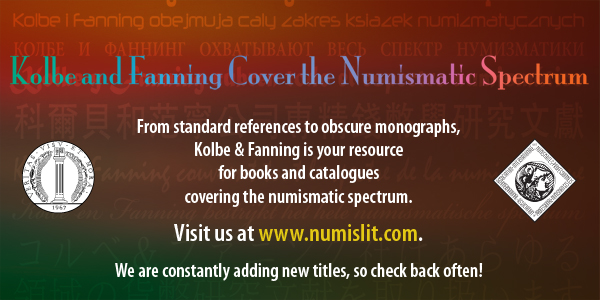
NEW ISRAELI BANKNOTES TO FEATURE FAMOUS HEBREW POETS
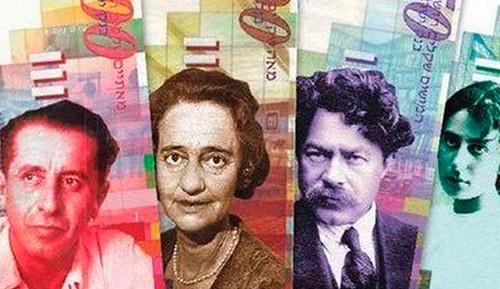
Bank of Israel presents new set of bills that will feature the likenesses of famous Hebrew poets, amid criticism that they lack Sephardi and Arab figures; Netanyahu: We will have Sephardi poet on next bills.
The cabinet approved on Sunday a new series of banknotes to be produced by the Bank of Israel, following protests that women and Mizrahim − Jews of Middle Eastern descent − continue to be absent or underrepresented as figures on Israel’s currency.
Of the four poets to appear on the new banknotes, due out by the end of the year, two are women − Rachel (Blobstein) and Leah Goldberg. Nathan Alterman and Shaul Tchernichovsky will also appear. No Sephardic or Mizrahi figures were chosen for this new series.
Prime Minister Benjamin Netanyahu addressed the criticism at Sunday's cabinet meeting, suggesting that the next figure to appear on an Israeli banknote be Rabbi Yehuda Halevi, the Spanish-Jewish poet and philosopher. But his declaration is unlikely to come to fruition, as the Bank of Israel governor is responsible for the design and production of currency, and no more new banknotes are expected to be issued for the next decade.
Sunday's approval drew scathing criticism from Shas MK Aryeh Deri, who on Friday had called on the cabinet not to approve the new issue.
“This morning’s approval is a symptom of the government’s behavior toward the Mizrahi public,” Deri said. “Mizrahim are excluded from the Supreme Court, academia, the media, the Israel Prize, the current government, and now it’s reached our banknotes. A banknote with a Mizrahi portrait isn’t worth any less. We will not make do with declarations and promises. We will battle discrimination with all the tools at my disposal.”
To read the complete article, see:
New Israeli banknotes let the Ashkenazi-Sephardi genie out the bottle, again
(www.haaretz.com/business/new-israeli-banknotes-let-the
-ashkenazi-sephardi-genie-out-the-bottle-again-1.517881)
QUERY: DETROIT DORR & BREWSTER INFORMATION SOUGHT
Tom Rigney writes:
For some time now I have been meaning to request assistance in finding information regarding a note I purchased a few years back. I'll attach a photo. It's an 1817 .25 Detroit Michigan note, signed by Dorr & Brewster and is one of the earliest notes of record from this area. I have had minimal success in researching Melvin Dorr & Brewster and thought this might be an interesting piece to request the help of some of the better research members.
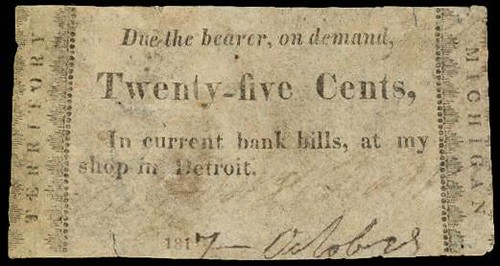
PAUL CUNNINGHAM ON E-SYLUM, LINCOLN, SHELLCARDS AND GOETZ DIES
Kathy Lawrence forwarded the recent copy of your somewhat interesting newsletter to me. I was looking to see and perhaps steal the Lincoln pattern coin in the Eric Newman/Heritage sale tonight. Well.. no theft here! I attended the sale in Schaumberg (Illinois) and the R8 coin should have honestly opened in the multiple 1000s (and it did), finally and quickly selling at $10,000 before the Heritage vigorish.
I have arranged with one of catalogers of the sale, Mark Borckardt, to share the pictures of the pattern with all of the serious Lincoln collectors out there. Some of your readers know that I have been working on a revision of King's Lincoln in Numismatics (which has turned into a total rewrite of the latter, with apologizes to Ernie) for some five years or so, and am happy to report that we are planning to getting the thing to a printer by the end of the year!
I was tickled to see so many collectors and dealers, a ridiculous number of whom I've met and raised a glass or ten to the hobby, contributing to the newsletter! I am sure that they were not necessarily trying to add something to the discussion but rather taking an opportunity to toot their own horns. John Burns , for example, is one who has an opinion on everything and, curiously, talked someone into publishing his future show schedule in this unassuming newsletter!
I saw George Cuhaj at Schaumberg but he was not close enough to engage. Tom Casper was there with his display of fobs. Paul Bosco? I still haven't seen his "new" shop! (Paul, don't use the word "dirtbag" in the same sentence with your own name.) Howard Daniel gets around but I didn't see him in Illinois. Joe Boling was there, judging (what else)? Johnny K. was there, "slumming."
The shellcards and Civil War tokens books by David Bowers are eagerly anticipated. (I dabbled with the shellcards a bit, some years ago, when I gathered all the previously 'cards published in TAMS before and offered them up in one, somewhat organized article.) Please support this effort.
To close, let me comment on the Karl Goetz dies that are floating around out there. They need to be policed! We cannot let these things get out to where they might be indiscriminately utilized to separate veteran and beginner collectors from their money! Use your voice to make the notion of restriking these dies anything but but wrong! Don't let the slimey Chinese crooks any opportunity to abuse the true intent of these works of art!
MEDALIST MERLIN SZÄSZ 1936-2013
 SZÄSZ, MERLIN Sculptor, Medalist and RISD Professor, passed away April 16, 2013. Merlin's wife, Carol "Woodie" Szösz, with whom he enjoyed a happy marriage that spanned half a century, passed away in 2005.
SZÄSZ, MERLIN Sculptor, Medalist and RISD Professor, passed away April 16, 2013. Merlin's wife, Carol "Woodie" Szösz, with whom he enjoyed a happy marriage that spanned half a century, passed away in 2005.
Merlin was born in Lima, Ohio on Halloween 1936. He came to RISD to teach in 1960 and served as Associate Dean of the College and Provost before being promoted to Professor of Foundation Studies in 1976. He received the L. C. Tiffany Award; the John R. Frazier Award; the American Numismatic Association's Award for Excellence and was the United States delegate to FIDEM.
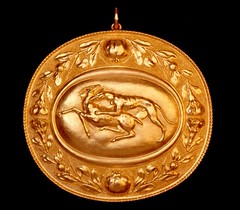 He created sculpture and medallic works for Harvard, Cornell, Barnard, RISD, the Providence Performing Arts Center and Our Lady of Good Counsel Church in West Warwick, RI. In 1997 he completed the Vietnam Veteran's Memorial of Albany County. Examples of his work reside in the collections of the RISD Museum, the Smithsonian Institute, the British Museum, and the House of Lords, London.
He created sculpture and medallic works for Harvard, Cornell, Barnard, RISD, the Providence Performing Arts Center and Our Lady of Good Counsel Church in West Warwick, RI. In 1997 he completed the Vietnam Veteran's Memorial of Albany County. Examples of his work reside in the collections of the RISD Museum, the Smithsonian Institute, the British Museum, and the House of Lords, London.
To read the complete article, see: Merlin Szasz (www.legacy.com/obituaries/Providence/obituary.aspx?n=Merlin-Szasz&pid=164409734#fbLoggedOut)
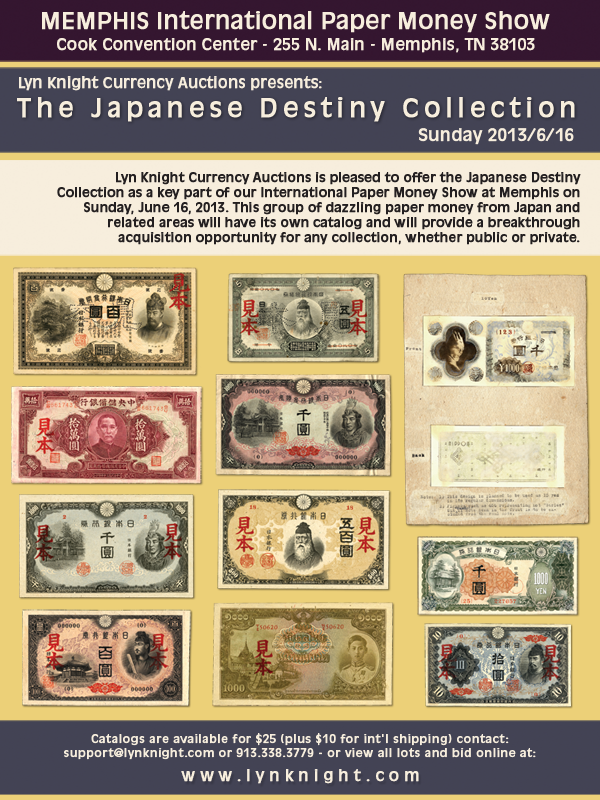
COLUMBIA EXPOSITION INTERNET RESOURCES
 A digitized version of Official catalog of 1893 Columbian Exposition:
The World's Columbian Exposition, Chicago, 1893
(books.google.com/books?id=It2xI5M9uQAC)
A digitized version of Official catalog of 1893 Columbian Exposition:
The World's Columbian Exposition, Chicago, 1893
(books.google.com/books?id=It2xI5M9uQAC)
Type "1893 columbian exposition" into Google Image - will locate images. Examples:

US Government Building
www.flickriver.com/photos/brooklyn_museum/sets/72157606873382962/
www.theswedishtiger.com/237-scotts.html
www.flickr.com/photos/field_museum_library/sets/72157616234589478/
The south half of the Government building was devoted to exhibits of Post Office, Treasury Dept, War Dept and Dept of Agriculture
Government Building: www.gutenberg.org/files/22847/22847-h/22847-h.htm#PLATE_54
Extensive Online Book listing here:
onlinebooks.library.upenn.edu/webbin/book/browse?
type=lcsubc&key=World%27s%20Columbian%20Exposition%20%
281893%20%3a%20Chicago%2c%20Ill%2e%29
In this list there is a link to this online book: columbus.iit.edu/bookfair/00264004.html
Going to Index view under Treasury Exhibit there are references on p.111-113 and 302 (only minor reference) columbus.iit.edu/bookfair/t.html
The links here will lead you to Ch7 for p.111-113 columbus.iit.edu/bookfair/ch7image.html
To read the earlier E-Sylum article, see: QUERY: COLUMBIAN EXPOSITION TREASURY DEPARTMENT EXHIBITS INFO SOUGHT (www.coinbooks.org/esylum_v16n14a15.html)
RARE ALBERT MEDAL BLOWS PAST AUCTION PRICE ESTIMATE
A Lichfield railway worker’s gallantry medal has sold for more than £10,000 at auction.
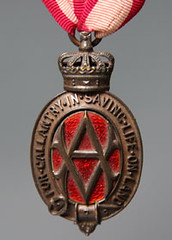 Arthur Eccleshall won his Albert Medal in 1908 after he lifted a child clear of a train approaching Bushbury Station.
Arthur Eccleshall won his Albert Medal in 1908 after he lifted a child clear of a train approaching Bushbury Station.
His medal went under the hammer at the Wolverhampton Auction Room, with bidding eventually finishing at £10,030.
The price was pushed up as only 290 Albert Medals were ever handed out – and many were traded in for a George Cross in 1971.
Ben Gamble, head auctioneer at Cuttlestones, said: “We’ve always had high hopes for this lot.
“Not only is it a very rare medal in its own right but the provenance – which is so important to collectors – is phenomenal and this is one occasion where our original estimate of between £4,000-£5,000 was well and truly shattered!”
To read the complete article, see: Lichfield worker’s rare gallantry medal sells for £10,000 at auction (lichfieldlive.co.uk/2013/04/25/lichfield-workers-rare-gallantry-medal-sells-for-10000-at-auction/)
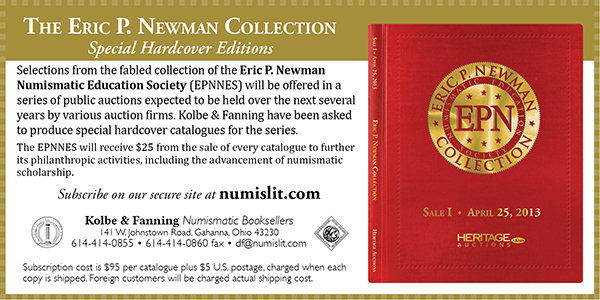
URSULA KAMPMANN'S TRAVELS IN TURKEY – PART 1
After endless weeks of waiting and preparation, we set off to the south. Even though we have almost six weeks to explore Turkey, we’re obviously eager to enjoy the journey there and back as well. And so, it’s off through the Brenner Pass headed towards Bolzano in South Tyrol. There's hardly anyone on the roads. In fact, on this gloriously bright Monday, it feels like everyone else is stuck sitting in their offices while we get the Brenner Pass all to ourselves. There’s still snow on the mountains. If only there were a particularly good place to pull over, a little snowball fight might have been in the cards! But with no place to do so, we made it to Bolzano in record time.
Although there was already a small settlement here in the Middle Ages, Bolzano is truly a child of the flourishing trade of the High Middle Ages. Around 1170/80, the Bishops of Trent, who controlled the region, founded a very manageable settlement here that was to become one of the major trade centres.
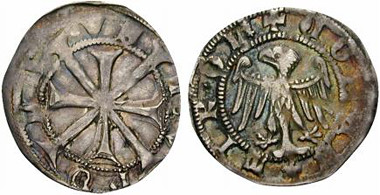
Tyrol. Leopold IV, 1396-1406. Meran twenties.
The Mercantile Museum also has an instructional exhibition on Bolzano economic history. And, of course, there’s also a coin display.
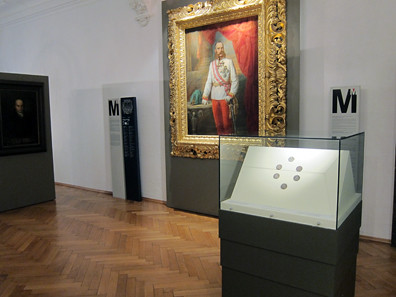
An exhibition on Bolzano economic history
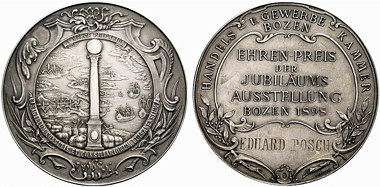
Bolzano. Prize medal of the Jubilee exhibition 1898
To read the complete article, see: http://www.coinsweekly.com/en/News/4?&id=1968 (www.coinsweekly.com/en/News/4?&id=1968)
IRAN MUSEUM RECEIVES DONATION OF KING ISMAEIL SAFAVI COIN
 A scarce silver coin belonging to the Safavid era has been dedicated by a Tehrani collector to the Stamp, Banknote, and Coin Treasury of the Central Museum of Astan Quds Razavi.
A scarce silver coin belonging to the Safavid era has been dedicated by a Tehrani collector to the Stamp, Banknote, and Coin Treasury of the Central Museum of Astan Quds Razavi.
According to the reports issued from Astan Quds Razavi, the director of the stamp, banknote, and coin treasury of the central museum of Astan Quds Razavi, Muhammad Hussein Yazdinejad, said that "This precious coin belongs to the time of the third King Ismaeil Safavi reign and now it dedicated to the Coin Treasury of Astan Quds Razavi by Amir Sa'eed Mar'ashi Nia, the Tehrani collector".
About the inscriptions of this coin and the designs on it, he asserted, "one of the side of coin, the phrase "لا اله الا الله،محمد رسول الله علي ولي الله" the motto of Shi'ites has been inscribed as a respect to the Infallible Imams (A.S.) and on the other side the phrase "the servant of the king of Wilayat, Ismaeil, minted in Mazandaran, 1167" has been inscribed.
Pointing to the historical characteristics of the dedicated coin, Yazdinejad added, "The third Shah Ismaeil Safavi ruled over Iran from 1163 to 1169 and the coins minted in his name are limited and just up to the 1167 some minted coins in some cities have been seen in his name."
The Director of the Stamp, Banknote, and Coin Treasury of Astan Quds Razavi asserted, "in recent years the Stamp, Banknote, and Coin Treasury of the Central Museum of Astan Quds Razavi has received some precious collections of coins from Iran and other countries which brought about more attention of the researchers, investigators, and those interested in history to this treasury for accomplishing various scientific researches."
To read the complete article, see: Dedicating the Scarce Silver Coin of Safavid Era to the Central Museum of Imam Ridha (abna.ir/data.asp?lang=3&id=412033)
A TOUR OF THE ROYAL MINT - PART ONE
Police and security officers at the staff entrance inspect our pass-card before the door is activated, no matter how well they know us – and that means everyone, even the Chief Executive. The pass-card is issued following strict security-checks and any loss of it must be reported to a police station immediately. Once in, we pass through secure turnstiles and an airport-style x-ray machine. We are also subject to random searches by the Police on departure, and there are search rooms nearby, just in case!
Although thousands of coins leave here every day, no-one may bring coins into The Royal Mint. Because of this, daily workplace transactions, such as office and charity collections or buying a canteen lunch, are undertaken without the use of coins. This entails exchanging bank-notes or coins for tokens with a monetary value at Reception, or loading value onto a card using bank-notes or tokens.
Visitors come in through a separate entrance and are escorted on site at all times by a member of staff. They are advised that coins, cameras, laptops and smoking items must be left in lockers at Reception. This is rigorously applied, even when the Bank of England visited us recently.
An impressive exhibition in the Visitors Reception holds current and historic coins, medals and other artefacts.
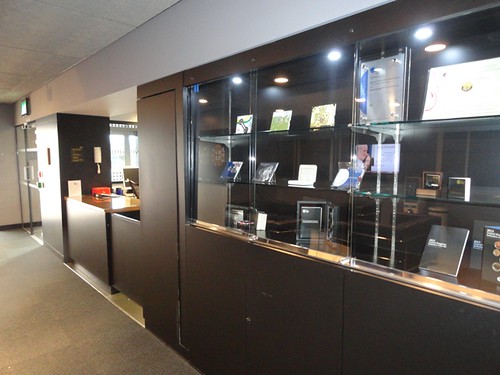
A ‘Roll of Honour’ in a glass case shows the names of four Royal Mint employees who sadly lost their lives when a bomb hit the Royal Mint building at Tower Hill in London on 13 June 1917. One of them is listed as a ‘Boy Clerk’. Poignantly, it also records the names of staff members who died in active service during the First World War, some of whom were awarded medals that were made at The Royal Mint by their own colleagues.
To read the complete article, see: Inside The Royal Mint – Part one – through the gates (blog.royalmint.com/inside-the-royal-mint-part-one-through-the-gates/)
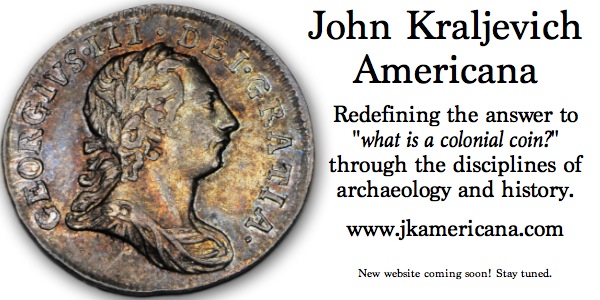
TREASURE HUNTER FINDS WASHINGTON INAUGURAL BUTTON
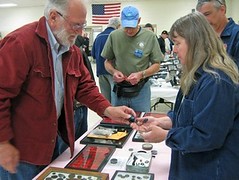 It could be gold that was lost in a wreck. It could be the dog tags of a war hero. It could even be the button worn by an enthusiastic patriot as the first President of the United States paraded through the streets. For Rick Guhse of Keene, it was a dime.
It could be gold that was lost in a wreck. It could be the dog tags of a war hero. It could even be the button worn by an enthusiastic patriot as the first President of the United States paraded through the streets. For Rick Guhse of Keene, it was a dime.
"It's a great thing for a grandpa and grandson to do together," Guhse said, standing next to his 6-year-old grandson Andrew Sawyer, at the Best O' North East four-day treasure hunters convention Saturday. Andrew came prepared, armed with his trusty magnifying glass.
Guhse took Andre out for his first hunt. Right out of the shoot, the six-year-old found a dime in his yard. Grandpa still has that one.
"It teaches (kids) history," Guhse said. "It gives them a sense of what came before and broadens the horizons of a young person's mind."
This year, it was a button that stole the show.
"It's from 1789," said Jim Doray, of Barre, Mass., speaking of the very rare George Washington inaugural button sitting on his table.
"Some buttons were given directly from George Washington to his troops, the elite troops that fought alongside him," he said.
Doray loves this button. One can hear it in his voice.
It's in the excited way he recounts its history and the place of prominence it has on his table.
Doray recently found it in his hometown of Lester, Mass. And he worked hard for that find, he doesn't mind telling listeners. His sister-in-law told him that the house in which he found it had once belonged to a colonel who fought with George Washington.
"He was in direct command with Washington. He fought alongside him in the Revolutionary War," Doray said. "Once I heard that, I knew I had to get permission to get on that property."
The house was sold to a college and he thought himself sunk - until it turned out his brother knew a member of the grounds crew at the house.
After a week of red tape and "hanging by my thumbs," Doray got permission to carefully search the land surrounding the house.
"I knew there was going to be a lot of history in the ground," he said. "I knew I was going to find something."
And he did.
The button, though worn and dirty, still bears the year 1789 clear as day.
To read the complete article, see:
It's all about the hunt for these treasure hounds in Keene
(www.unionleader.com/article/20130427/NEWHAMPSHIRE09/
130429252/-1/newhampshire09)
2013 BROOKGREEN GARDENS MEDAL BY GREG WYATT
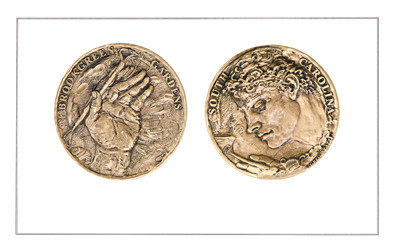
Today at 3:00PM President Bob Jewell (no relation) hosted the annual President's Council Members Reception. This years sculptor is Greg Wyatt of Grand-View-on-the Hudson, New York.
His work is entitled "The Universal Artist." It depicts the artist's hand working with a sculptor's tool on the obverse and a sculptor/ceramist portrait on the reverse.
The ceremony was followed at 4:30PM by a talk by the sculptor about designing the 2013 Brookgreen Garden Membership medal.
Sculptor Greg Wyatt is an American representational artist who works primarily in cast bronze and is the sculptor-in-residence at the Cathedral Church of Saint John the Divine in New York city.
Some of his other works are:
- Fantasy Fountain (1983) Gramercy Park, NYC
- Peace Fountain (1985) The Cathedral of Saint John The Divine, NYC
- Scholar's Lion (2004) Columbia University, NYC
- Bill of Rights Eagle (1998) and the Learning Tree (2000) Vanderbilt University, Nashville, TN.
For more information on Brookgreen Gardens, see: www.brookgreen.org
FEATURED WEB PAGE: CUBAN NUMISMATIC ASSOCIATION
This week's Featured Web Page is the Cuban Numismatic Association.Welcome to the Web site of the Cuban Numismatic Association, founded on January 9, 2004. The goal of the Association is to encourage, promote and disperse Cuban numismatic knowledge, culture, education and fraternal relations among the numismatic community.
The association is not affiliated with the Cuban Government Mint or the Association of Cuban Numismatics, based in Havana, Cuba.

www.cubannumismaticassociation.com
